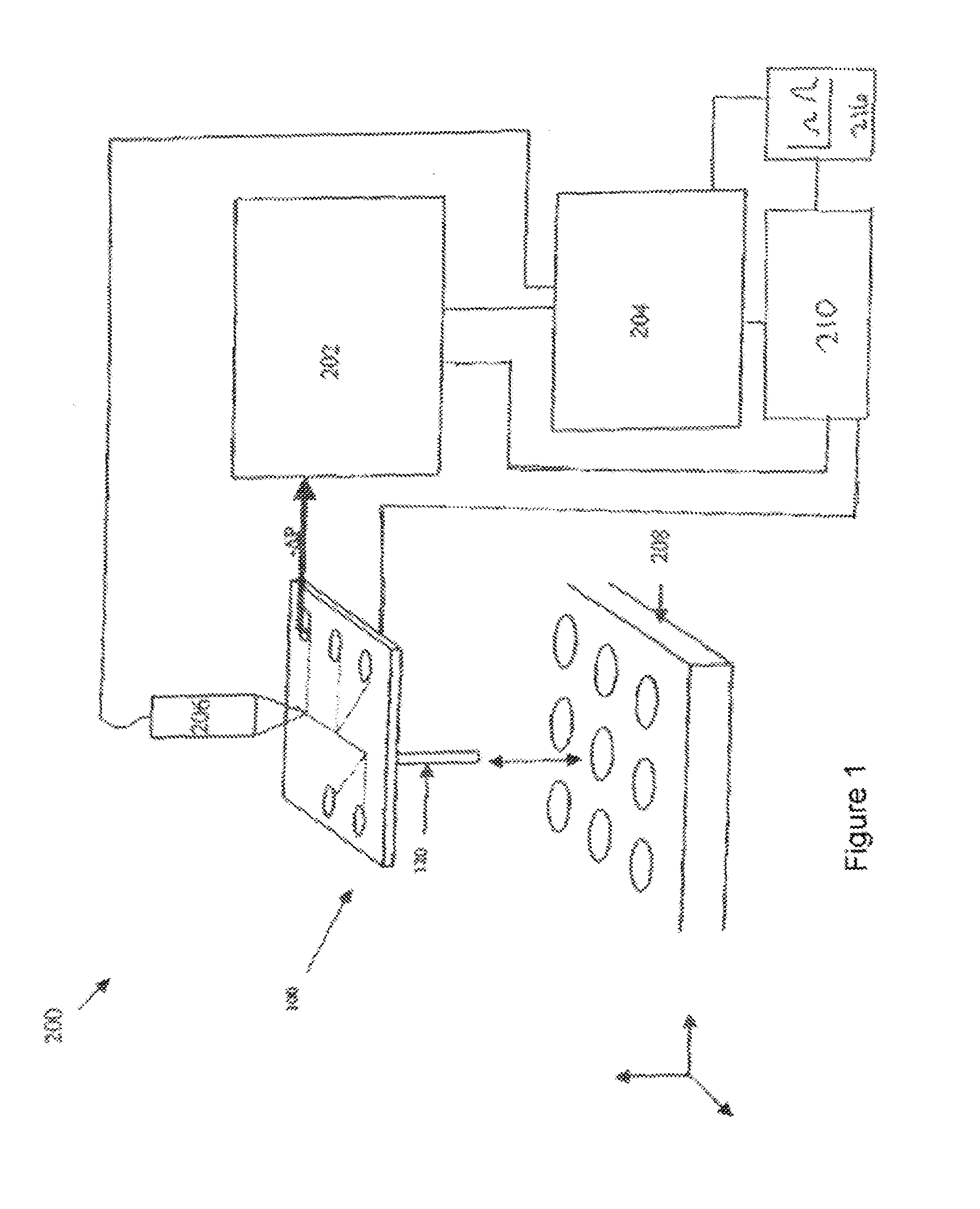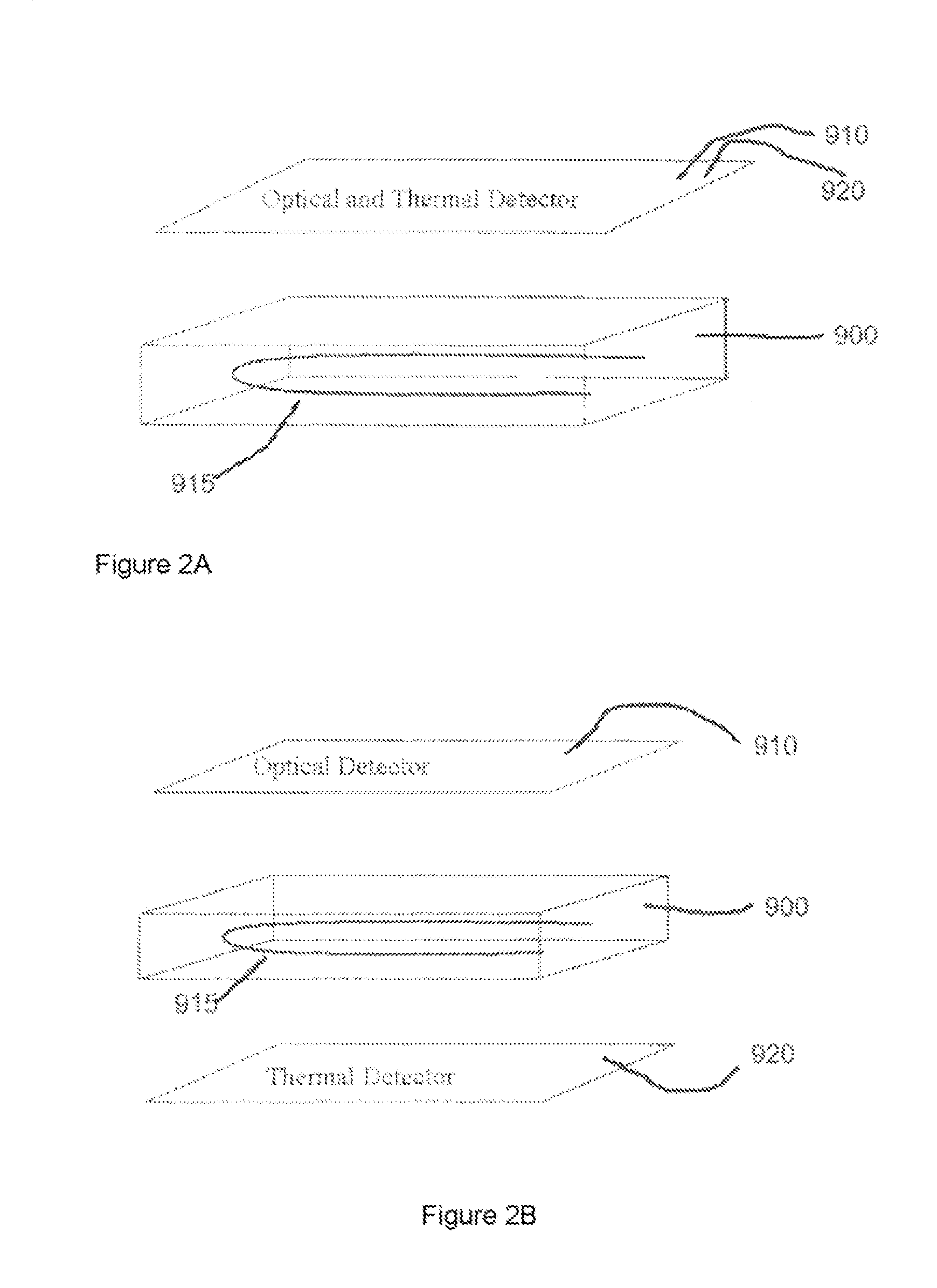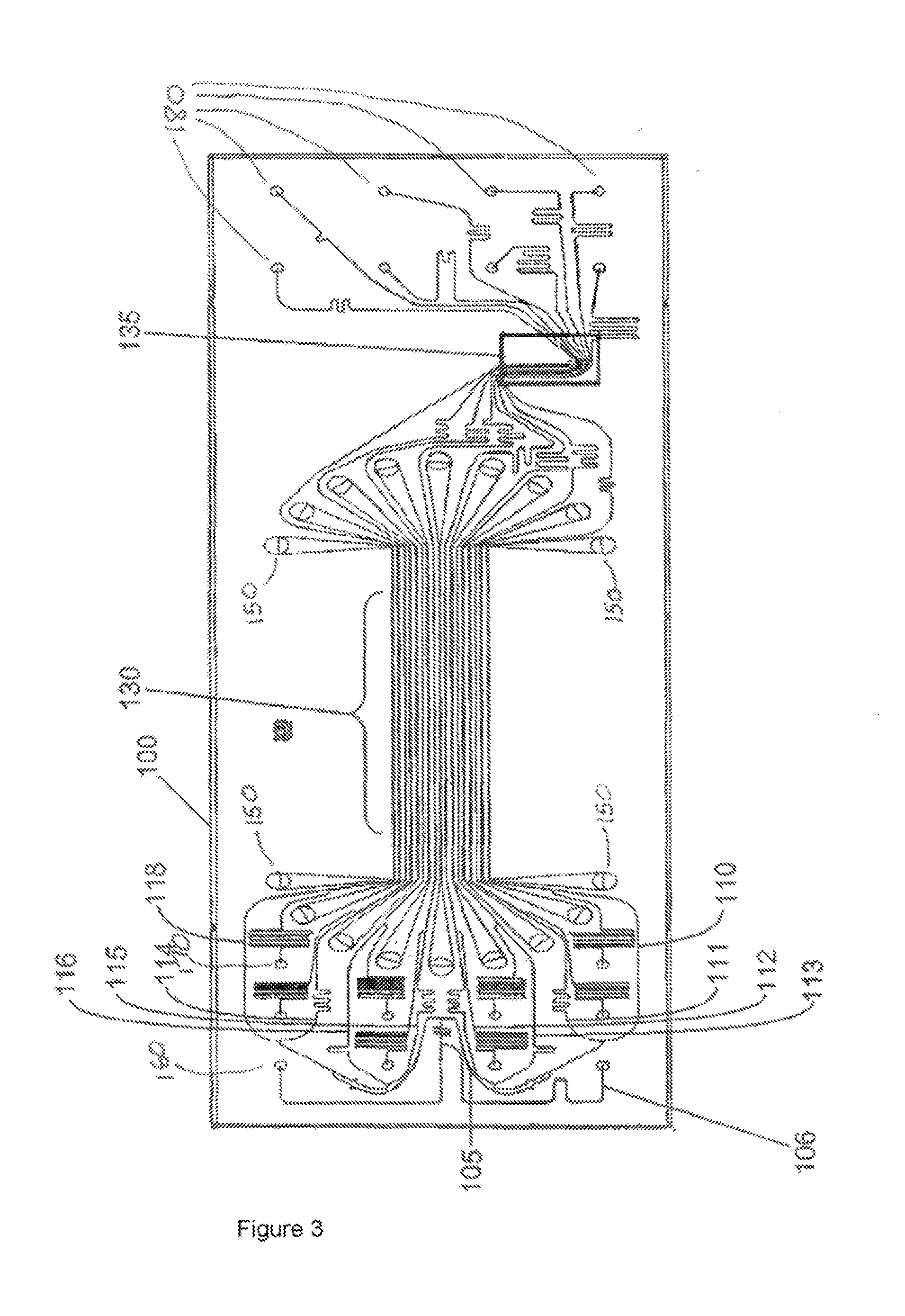Method and apparatus for applying continuous flow and uniform temperature to generate thermal melting curves in a microfluidic device
a microfluidic device and thermal melting curve technology, applied in fluid controllers, biochemistry apparatus and processes, laboratory glassware, etc., can solve problems such as loss of fluorescent signal due to dye photobleaching and inability to integrate well in systems
- Summary
- Abstract
- Description
- Claims
- Application Information
AI Technical Summary
Benefits of technology
Problems solved by technology
Method used
Image
Examples
Embodiment Construction
[0036]Methods and devices in accordance with the invention are capable of rapidly characterizing a variety of biological materials via the generation of molecular melt curves. For example, the molecular melt curve of a double stranded DNA molecule can provide information about the number of base pairs in the molecule, the GC content, and the amount of variation from ideal Watson-Crick base pairing. A molecular melt curve also can be used to indicate the degree of binding between one or more test molecules and a target molecule. “Binding” includes not only, e.g., receptor-ligand interactions, but also, e.g,., nucleic acid-nucleic acid hybridization interactions and can include both specific and nonspecific interaction. If the test molecules do bind to the target molecule, then their binding can be quantified by the invention. The methods and devices herein are flexible and can be applied to many different types of compounds and molecules. For example, both the target molecule and the...
PUM
| Property | Measurement | Unit |
|---|---|---|
| time | aaaaa | aaaaa |
| time | aaaaa | aaaaa |
| angle | aaaaa | aaaaa |
Abstract
Description
Claims
Application Information
 Login to View More
Login to View More - R&D
- Intellectual Property
- Life Sciences
- Materials
- Tech Scout
- Unparalleled Data Quality
- Higher Quality Content
- 60% Fewer Hallucinations
Browse by: Latest US Patents, China's latest patents, Technical Efficacy Thesaurus, Application Domain, Technology Topic, Popular Technical Reports.
© 2025 PatSnap. All rights reserved.Legal|Privacy policy|Modern Slavery Act Transparency Statement|Sitemap|About US| Contact US: help@patsnap.com



